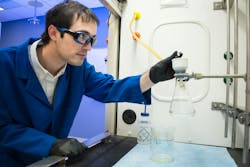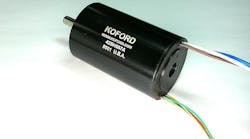ARLINGTON, Va. – U.S. military researchers are asking industry to generate fuel from local sources of carbon dioxide to provide electric power and battery charging for military battlefield operations.
Officials of the U.S. Defense Advanced Research Projects Agency (DARPA) in Arlington, Va., issued a broad agency announcement (HR001124S0014) earlier this month for the Expeditionary Carbon Utilization for Energy Resilience and Stabilization (ExCURSion) project.
Batteries and fossil fuels dominate today's technologies for portable energy storage and use by expeditionary forces. While batteries can be recharged from any voltage source, yet most chargers suffer from energy density so low as to make them infeasible for military missions that require low size, weight, and power consumption (SWaP). Although hydrocarbon-based fossil fuels have much higher energy density, they still require regular, costly, and dangerous resupply.
Instead, DARPA researchers seek the ability to generate fuel from local sources of carbon dioxide to combine the high energy density of fossil fuels with the energy-source-agnostic advantage of electric systems to revolutionize expeditionary energy logistics.
Combining carbon dioxide capture and storage with carbon dioxide reduction to energy-storing fuel would enable a completely closed system able to capture its own combustion stream and recharge its fuel content on energy input, researchers say.
Such a system could take advantage of the high energy density of traditional fossil fuels and the operational flexibility of an electric battery system.
The ExCURSion program seeks to enable carbon dioxide reduction, capture, and storage as key components for a future self-enclosed system to create liquid carbon fuels for storage and use on military missions. This approach could enable safe, field-deployable, high-density, and rechargeable energy storage.
The goals of the ExCURSion proposers day are to introduce the research community to the ExCURSion program vision and goals; explain the mechanics of a DARPA program and milestones; and encourage teaming among potential bidders.
Related: NASA announces investments to advance alternative fuels and more
A carbon fuel cell prototype that is closed, portable, rechargeable, will generate electricity from fuel, and capture its own CO2 exhaust to regenerate fuel. The program and a potential follow-on prototype effort will enable safe, high-density, and rechargeable energy storage in the field.
ExCURSion confronts two primary challenges: producing liquid fuel from CO2 is at least 30 times slower than lithium battery recharging; and capturing and storing CO2 from exhaust is plagued by the tradeoff between the working capacity and the stability of the materials used.
ExCURSion has two technical areas: CO2 reduction to high-energy-density fuel, primarily focusing on the rate of fuel generation; and CO2 capture and storage, primarily focusing on working capacity and stability. DARPA briefed industry on ExCURSion on 1 March 2024. Agency officials say they plan to award several contracts.
Related: Optical warfare: technology emerges to see the enemy, and to blind him
Other efforts have focused on carbon dioxide capture and storage. Just last November a researcher at Boston University in Boston won a DARPA Young Faculty Award for chemically developing a new material to capture carbon dioxide in a targeted and efficient way, according to a story published by the Boston University College of Engineering.
DARPA recognized Joerg Werner for his work in developing a material to capture carbon dioxide in efforts to isolate and remove this gas from breathable air supplies in enclosed spaces like submarines, underground bunkers, and crewed spacecraft.
“Especially for a space station, you need a very small, lightweight air purification system that uses very little energy,” Werner was quoted in a story headlined Clearing the Air in the Boston University publication (https://www.bu.edu/eng/2023/11/27/clearing-the-air/).
Related: ICAO environmental committee brings aircraft CO2 standard closer to adoption
Meanwhile, companies like ExxonMobil in Houston and Battelle Memorial Institute in Columbus, Ohio, are recognized leaders in the capture and storage of carbon dioxide.
Companies interested in participating in the ExCURSion effort were asked to submit abstracts by 8 March, and full proposals by 29 April 2024 to the DARPA Broad Agency Announcement Tool (BAAT) online at https://baa.darpa.mil/Public/SecurityAgreement.
Email questions and concerns to DARPA's Keith Whitener, the ExCURSion program manager, at [email protected]. More information is online at https://sam.gov/opp/f2d3da78e85447ae922079c05b5194bc/view.



